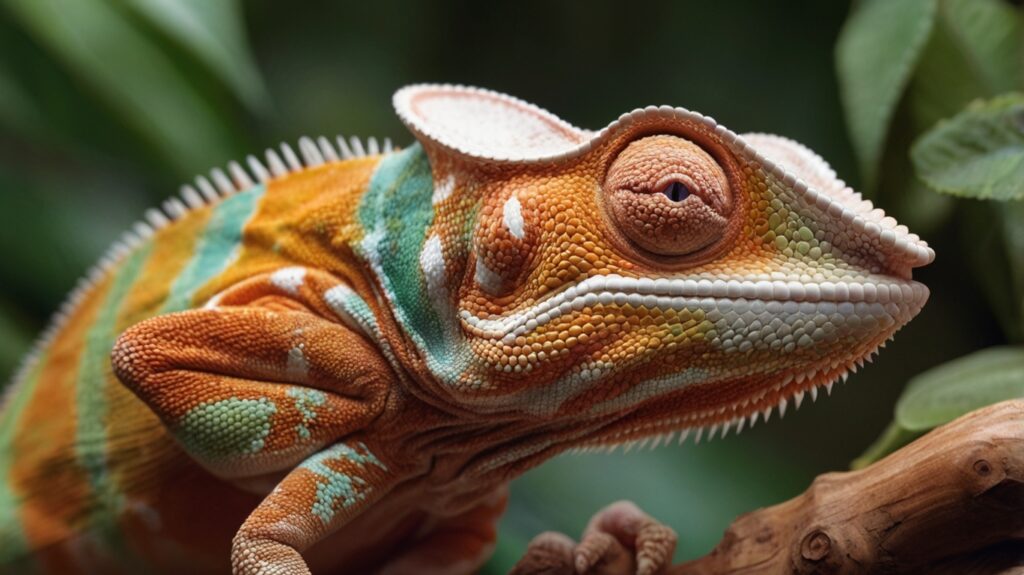Table of Contents
- Introduction
- Essential Facts About Chameleons
- The Science Behind Chameleon Behavior
- Practical Care Tips for Chameleons
- Expert Opinions on Chameleon Care
- Common Misconceptions Debunked
- Conclusion
- Frequently Asked Questions (FAQs)
Introduction
Owning a chameleon can be both a challenging but rewarding experience. These exotic reptiles require specialized care, making them unsuitable for beginner pet owners. However, with the right knowledge, you can create a thriving environment for your scaly companion. This guide combines scientific research, veterinarian advice, and real-world experience to help you navigate the complexities of chameleon care.

Essential Facts About Chameleons
Before bringing home a chameleon, it’s crucial to understand their unique needs:
- Species Variations: Popular species like Veiled and Panther chameleons have different care requirements.
- Lifespan: With proper care, chameleons can live 5-10 years.
- Temperament: They are solitary creatures and prefer minimal handling.
- Habitat Needs: Require specific humidity, lighting, and enclosure setups.
Proper research ensures you’re prepared for the challenges and rewards of chameleon ownership.
The Science Behind Chameleon Behavior
Chameleons exhibit fascinating biological and behavioral traits:
- Color Change Mechanism: Used for communication and temperature regulation, not just camouflage.
- Vision: Their 360-degree eyesight helps them spot prey and predators.
- Hydration: Unlike other reptiles, they drink water droplets from leaves.
Understanding these traits helps in providing species-appropriate care.
Practical Tips for Chameleons: Challenging but Rewarding Reptile Pets
1. Enclosure Setup
- Size: Minimum 24x24x48 inches for adult chameleons.
- Ventilation: Screen cages prevent respiratory issues.
- Plants: Live plants like pothos and ficus improve humidity.
2. Lighting & Heating
- UVB Lighting: Essential for calcium metabolism.
- Basking Spot: Maintain 85-90°F for digestion.
3. Feeding & Hydration
- Diet: Gut-loaded crickets, roaches, and occasional worms.
- Watering: Use a dripper or misting system 2-3 times daily.
4. Handling & Stress Reduction
- Minimal Handling: Reduces stress-related health issues.
- Signs of Stress: Dark colors, hissing, or refusing food.
What Experts Say About Chameleons
Veterinarians and herpetologists emphasize:
- Regular Vet Check-ups: Prevent metabolic bone disease and parasites.
- Consistent Environment: Sudden changes cause stress.
- No Cohabitation: Chameleons are territorial and should live alone.
Common Misconceptions About Chameleons
❌ Myth: Chameleons change color to match any background.
✅ Fact: They change due to mood, temperature, and social signals.
❌ Myth: They are low-maintenance pets.
✅ Fact: They require daily care and monitoring.
❌ Myth: All chameleons eat fruits and vegetables.
✅ Fact: Most are insectivores (some species may eat greens).
Conclusion
While chameleons are challenging but rewarding reptile pets, their care demands knowledge, patience, and dedication. By following expert advice, maintaining a proper habitat, and understanding their unique behaviors, you can ensure a healthy and happy life for your chameleon. If challenges arise, consult a reptile-savvy veterinarian for tailored guidance.
Frequently Asked Questions (FAQs)
1. How long do chameleons live?
With proper care, most species live 5-10 years, depending on genetics and environment.
2. Can chameleons be handled often?
No, they stress easily and prefer minimal interaction.
3. What’s the best chameleon species for beginners?
Veiled Chameleons are hardier but still require expert care.
4. Why is my chameleon not eating?
Possible causes include stress, incorrect temperatures, or illness—consult a vet if fasting lasts more than 3 days.
5. Do chameleons need companions?
No, they are solitary and territorial, housing multiple chameleons leads to aggression.
